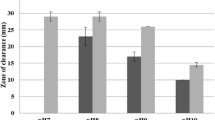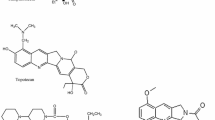Abstract
The induction of acid phosphatase (ACPase) in the mycorrhizal fungi is an adaptive survival mechanism to cope in a low-phosphate environment. A mycorrhizal fungi Serendipita indica can induce the ACPase enzyme and enhance the phosphate (Pi) level to the host plant through Pi-solubilization mechanism, both intracellular and extracellular (media) levels. The spectrophotometer technique has been widely and commonly used to measure the ACPase enzyme activity in all microorganisms and plants using pNPP as a substrate. However, this technique cannot be useful when studying the involvement of ACPase isoforms in Pi-solubilization. In this article, we developed a single method to identify and express the ACPase isoforms of S. indica that contribute to the Pi-nutrition in the plant. This is native-PAGE electrophoresis with the in-gel assay and staining to detect the isoforms of the ACPase enzyme. The dark red-brown color developed after staining indicates the non-denatured (native) ACPase enzyme. This method utilized a modified minimal media for the de-repression of P-responsive genes such as ACPases with minimum salt contamination in the samples. This method will be helpful for the characterization of secretory and intracellular ACPases in fungi.


Similar content being viewed by others
Availability of data and material (data transparency)
All data related to this work will be available on request to the corresponding author.
Code availability (software application or custom code)
Not applicable.
References
Aleksieva P, Spasova D, Radoevska S (2003) Acid phosphatase distribution and localization in the fungus Humicola lutea. Zeitschrift Für Naturforschung C 58(3–4):239–243
Alvarez M, Huygens D, Diaz LM, Villanueva CA, Heyser W, Boeckx P (2012) The spatial distribution of acid phosphatase activity in ectomycorrhizal tissues depends on soil fertility and morphotype, and relates to host plant phosphorus uptake. Plant Cell Environ 35(1):126–135
Anith KN, Aswini S, Varkey S, Radhakrishnan NV, Nair DS (2018) Root colonization by the endophytic fungus Piriformospora indica improves growth, yield and piperine content in black pepper (Piper nigurm L.). Biocatal Agric Biotechnol 14:215–220
Barka T (1961) Studies of acid phosphatase. I. Electrophoretic separation of acid phosphatases of rat liver on polyacrylamide gels. J Histochem Cytochem 9(5):542–547
Behera BC, Yadav H, Singh SK, Mishra RR, Sethi BK, Dutta SK, Thatoi HN (2017) Phosphate solubilization and acid phosphatase activity of Serratia sp. isolated from mangrove soil of Mahanadi river delta, Odisha, India. J Genetic Eng Biotechnol 15(1):169–178
Della Mónica IF, Godoy MS, Godeas AM, Scervino JM (2018) Fungal extracellular phosphatases: their role in P cycling under different pH and P sources availability. J Appl Microbiol 124(1):155–165
Etesami H, Jeong BR (2021) Contribution of arbuscular mycorrhizal fungi, phosphate–solubilizing bacteria, and silicon to P uptake by plant: a review. Front Plant Sci 12:1355
Freitas-Mesquita AL, Meyer-Fernandes JR (2014) Biochemical properties and possible roles of ectophosphatase activities in fungi. Int J Mol Sci 15(2):2289–2304
Gaind S, Nain L (2015) Soil-phosphorus mobilization potential of phytate mineralizing fungi. J Plant Nutr 38(14):2159–2175
Gill SS, Gill R, Trivedi DK, Anjum NA, Sharma KK, Ansari MW, Ansari AA, Johri AK, Prasad R, Pereira E (2016) Piriformospora indica: potential and significance in plant stress tolerance. Front Microbiol 7:332
Hill TW, Kafer E (2001) Improved protocols for Aspergillus minimal medium: trace element and minimal medium salt stock solutions. Fungal Genetics Reports 48(1):20–21
Joner EJ, Johansen A (2000) Phosphatase activity of external hyphae of two arbuscular mycorrhizal fungi. Mycol Res 104(1):81–86
Krasnopevtseva NG, Urazmanova NA, Padkina MV (1986) Genetical and biochemical research of acid phosphatases in yeast Saccharomyces cerevisiae. XII. Yeast repressible acid phosphatases isolation and characteristics. Vestnik Saint Petersburg Univ Manag Ser 3:98–106
MacIntyre RJ (1971) A method for measuring activities of acid phosphatases separated by acrylamide gel electrophoresis. Biochem Genet 5(1):45–56
Mohd S, Shukla J, Kushwaha AS, Mandrah K, Shankar J, Arjaria N, Saxena PN, Narayan R, Roy SK, Kumar M (2017) Endophytic fungi Piriformospora indica mediated protection of host from arsenic toxicity. Front Microbiol 8:754
Mohd S, Kushwaha AS, Shukla J, Mandrah K, Shankar J, Arjaria N, Saxena PN, Khare P, Narayan R, Dixit S (2019) Fungal mediated biotransformation reduces toxicity of arsenic to soil dwelling microorganism and plant. Ecotoxicol Environ Saf 176:108–118
Nahas E (2015) Control of acid phosphatases expression from Aspergillus niger by soil characteristics. Braz Arch Biol Technol 58:658–666
Nguyen CT, Saito K (2021) Role of cell wall polyphosphates in phosphorus transfer at the arbuscular interface in mycorrhizas. Front Plant Sci 12:725939
Ngwene B, Boukail S, Söllner L, Franken P, Andrade-Linares DR (2016) Phosphate utilization by the fungal root endophyte Piriformospora indica. Plant Soil 405(1):231–241
Rejsek K, Vranova V, Pavelka M, Formanek P (2012) Acid phosphomonoesterase (EC 3.1. 3.2) location in soil. J Plant Nutr Soil Sci 175(2):196–211
Rombola TH, Pedrinho EAN, de Macedo Lemos EG, Gonçalves AM, dos Santos LF, Pizauro JM (2014) Identification and enzymatic characterization of acid phosphatase from Burkholderia gladioli. BMC Res Notes 7(1):1–7
Sato T, Ezawa T, Cheng W, Tawaraya K (2015) Release of acid phosphatase from extraradical hyphae of arbuscular mycorrhizal fungus Rhizophagus clarus. Soil Sci Plant Nutr 61(2):269–274
Sato T, Hachiya S, Inamura N, Ezawa T, Cheng W, Tawaraya K (2019) Secretion of acid phosphatase from extraradical hyphae of the arbuscular mycorrhizal fungus Rhizophagus clarus is regulated in response to phosphate availability. Mycorrhiza 29(6):599–605
Souza AA, Leitão VO, Ramada MH, Mehdad A, Georg RC, Ulhoa CJ, Freitas SM (2016) Trichoderma harzianum produces a new thermally stable acid phosphatase, with potential for biotechnological application. PLoS ONE 11(3):e0150455
Straker CJ, Mitchell DT (1986) The activity and characterization of acid phosphatases in endomycorrhizal fungi of the Ericaceae. New Phytol 104(2):243–256
Tarafdar JC, Yadav RS, Niwas R (2002) Relative efficiency of fungal intra- and extracellular phosphatases and phytase. J Plant Nutr Soil Sci 165(1):17–19
Wang X-X, Hoffland E, Feng G, Kuyper TW (2017) Phosphate uptake from phytate due to hyphae-mediated phytase activity by arbuscular mycorrhizal maize. Front Plant Sci 8:684
Yadav RS, Tarafdar JC (2003) Phytase and phosphatase producing fungi in arid and semi-arid soils and their efficiency in hydrolyzing different organic P compounds. Soil Biol Biochem 35(6):745–751
Funding
ASK is thankful to the UGC for providing Senior Research Fellowship to support her PhD research work. MK is thankful to the CSIR-Indian Institute of Toxicology Research, Lucknow, India for providing financial support (MLP002).
Author information
Authors and Affiliations
Contributions
ASK: designing, protocol and experiment standardization, formal analysis, visualization, data analysis, literature survey and manuscript writing. MK: conception, data analyzing and manuscript editing.
Corresponding author
Ethics declarations
Conflict of interest
The authors declare that they have no known competing financial interests or personal relationships that could have appeared to influence work reported in this paper.
Additional declarations for articles in life science journals that report the results of studies involving humans and/or animals
Not applicable.
Ethics approval
Not applicable.
Consent to participate
Not applicable.
Consent for publication
All authors have seen, read, agreed and given consent for the communication and publication of this manuscript. The CSIR-IITR communication number for this manuscript is 3752.
Rights and permissions
About this article
Cite this article
Kushwaha, A.S., Kumar, M. An effective in-gel assay protocol for the assessment of acid phosphatase (ACPase) isoform expression in the fungus Serendipita indica. 3 Biotech 12, 40 (2022). https://doi.org/10.1007/s13205-021-03103-0
Received:
Accepted:
Published:
DOI: https://doi.org/10.1007/s13205-021-03103-0




